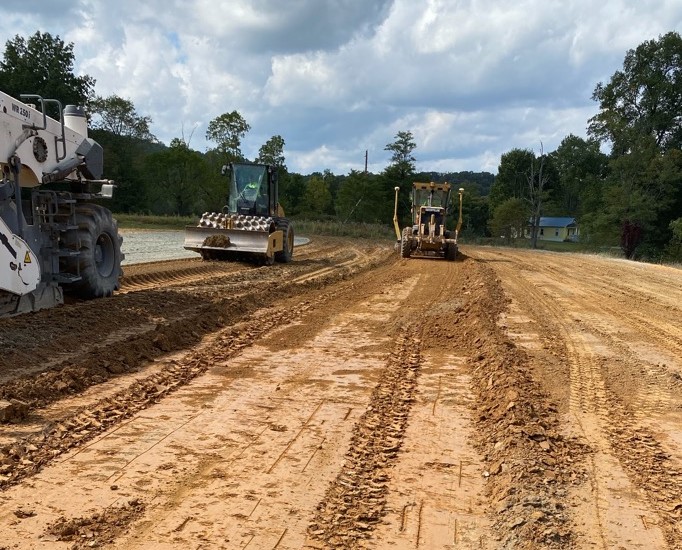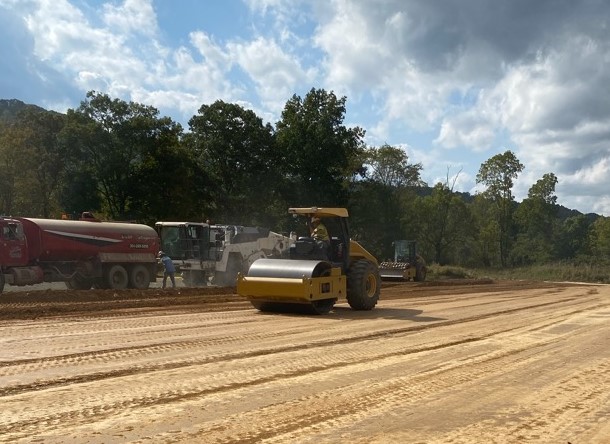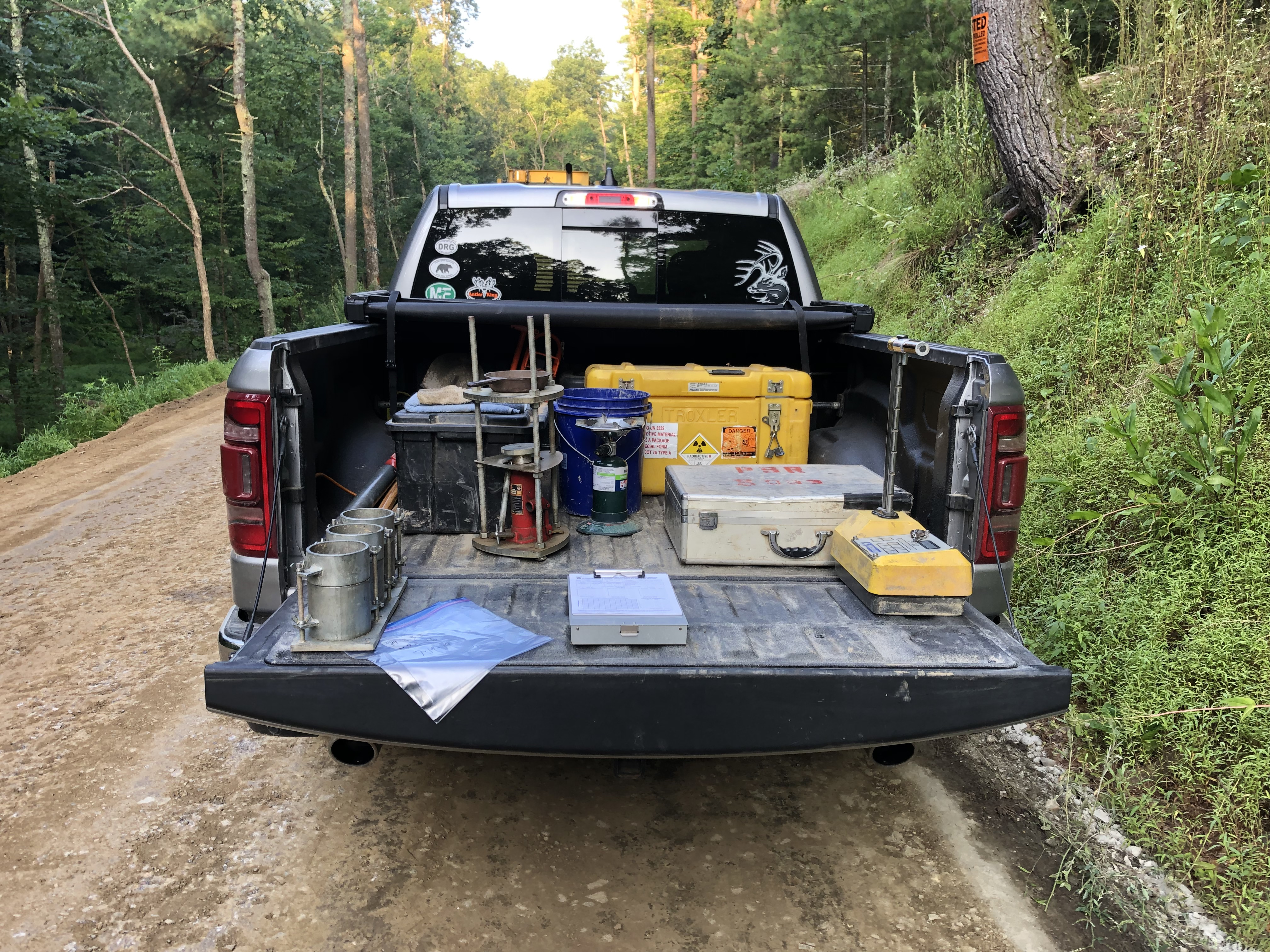
Soil & Subgrade Stabilization
PS&R has specialized experience in soil and subgrade stabilization utilizing chemical additives including Portland cement, lime, and industrial byproducts such as lime kiln dust (LKD) and fly ash. From collecting samples; to completing mix designs to determine the most cost effective additive and application rate; to monitoring and field testing, PS&R has the experience and resources to provide cutting edge solutions for soil and subgrade stabilization projects.

Soil Stabilization process
- A specially designed reclaiming machine pulverizes the existing subgrade surface to a pre-determined depth providing a homogeneous mixture.
- An additive (Portland Cement, Lime, LKD, Fly ash) is then spread across the pulverized surface.
- The additive is blended with the subgrade material until the desired properties are achieved. (Water addition rates may require adjustments throughout the project due to material variability)
- The new base is shaped by a motor grader to the proper profile and compacted to the specified dry density as determined in the previously completed mix design. (In-place density testing performed by a field technician during the compaction process verifies proper compaction.)>
Soil Stabilization benefits
- Stabilization increases the sheer strength value of soils, thus adding support.
- Stabilization helps to control shrink-swell properties associated with many soils, thereby improving the load-bearing capacity of sub-grade intended to support pavement sections, building pads etc.
- Additional benefits include lower permeability, higher resistance values and potential reduction in base and pavement thickness due to the strength gains achieved by stabilizing the subgrade.
- Lime and cement modification can cut costs and save time on project schedules by reducing soil drying time or eliminating the need for costly unsuitable material removal and replacement.

